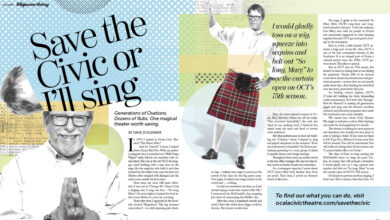Story: Kelli Fuqua Hart, Ocala Magazine’s Executive Editor
Photography: Chris Redd
Said to have been created by white supremacists, although many historians disagree, the game of Chess has been interpreted as having grim racial undertones.
Whites lead the game and some say it is a reminder that blacks will never have the advantage and will have to compete with the white man all of their lives. There are more extreme examples of accusations online, calling the game “classist,” “fascist” and a mastering of the human mind through racial manipulation.
Albeit speculation, Chess has stirred up decades of debate. And, although unconfirmed in its intent, the strategy and maneuvering of sport can certainly relate to the rebellion and mutiny in an all too familiar racial war.
Labeled weakest of the pieces, a young James M. Young, Jr. was growing up much like a player’s pawn. An adolescent, smack dab in the middle of the civil rights movement, Young was at a grave disadvantage. Young was black.
In Young’s book All Things Work Together for Good… Why Can’t We?, he recalls getting the hand-me-down textbooks from the white schools, waiting in non-air conditioned rooms designated for “colored folks like him” and drinking from lukewarm water fountains, just a few feet from where white students were enjoying ice-cold drinks from their exclusive fountains.
“I remember riding to and from Hollywood, Florida and Ocala, Florida on the Silver Meteor, a train whose last two cars were reserved for ‘colored’ passengers,” recalls Young, who also vividly remembers being suspended from high school for riding on a whites-only bus, one that transported a measly three students, instead of the over-crowded three-to-a-seat blacks-only bus he was assigned.
Hearing a “Negro” rattle off a speech on national television in 1963 about having a dream was a memorable moment for the young James. A black man’s dream? One that this nation could actually “rise up” and live out the true meaning of our creed that all men are equal? One where “sweltering” oppression would be “formed into an oasis of freedom and justice?” A dream where young black men like James could be judged by “the content of their character” and not by the blackness of their skin? Oh, that is some dream indeed!
Two years later, a revolution happened when the Civil Rights Act was passed. “We were Free(er)!” exclaimed Young. Black people could eat at restaurants and choose any seat they wanted in a movie theater and go to whichever school they desired. They finally had access to clean bathrooms and could enter stores through the front doors like the white folks. Black people could exercise their right to vote for the first time ever. The idea of oppression and racism and segregation was abolished! – Blacks and whites would forever live in harmony, with love.
Hardly.
Although opportunities for blacks had improved, there was still a great deal of tension between races, as people didn’t truly understand how to treat this new way of life. There was confusion and resentment. Both races were often uncomfortable and even incapable of operating under a new rule.
Young’s older sister Gloria made the decision to attend Ocala High School, representing a very small number of black students that chose to integrate themselves. In fact, when it came time to take the senior placement exam, Gloria scored “three hundred ninety-two of a possible four hundred twenty six points,” boasts Young. This was the highest of any black student in Marion County. Quite a buzz that created. Although proud of his sister, Young decided against “white school” knowing the pool of girls for him to choose from would be far too shallow. After all, blacks may now be able to sit near a white girl, but to date one? No sir.
Many local battles were being fought and won. In the early 1960s, the Ocala Star Banner had this habit of singling out John Does or Jane Does by including that the “Ocala Negro was arrested and charged with…” However, white criminals were simply identified by name. Media was a method to create the perception that, according to Young, “[Negroes] all do this kind of thing.” During the Civil Rights movement, issues like this were exposed, confronted and defeated.
Likewise, and this sadly still holds true, there was a need to identify “Negro” lawyers, “Negro” doctors, “Negro” principals, etc. You’d not hear, “Charles is a white attorney,” but rather, “Charles the attorney.” Today, this has improved, but if you are sensitive to it and listen closely, you will hear statements such as, “He’s cute, for a black guy” or “This white lady was knocking on the door.” It exists and it goes both ways. We’ve yet to be able as a nation to see men and women as equal – without singling them out by skin color – sadly not fulfilling Dr. King’s beautiful dream.
Like the King in a game of chess, Dr. Martin Luther King was and still is a very important part of our nation and our history, but still very limited in what he could do for our people. He depended on us “pawns,” or the people of the United States, to take his vision and his dream and reign victoriously over hatred and oppression. Pawns such as Young and his sister Gloria, and like everyone living during the Civil Rights movement, were capable of such a victory because, like in chess, when a Pawn “reaches the other side of the board” it can become any other chess piece it desires through promotion. Sadly, too much fear stopped many Americans from reaching the other side – the side of total freedom from racist beliefs and fears.
A lot of times, fear comes from not knowing who you are. According to Young, “Blacks in America have long suffered from an identity crisis.” During my interview with Young, he asked me how I was “identified” when I was born. My answer was, although slightly confused, “a white female baby.” He then asked me, “When you were 5-years old, how were you identified?” My answer, “A white child.” Next, Young asked, “How about when you were 15-years old? How were you identified then?” I was seeing a pattern and answered, “A white teenager.” All of my life, I was a “white” something or another, without any doubt in my mind. But what about blacks?
In Young’s lifetime, he’s been labeled “Colored, Negro, Black, Afro-American, Black again and now African-American.” And these are just the “decent” titles he has been called. So much confusion surrounds the “black race” because the identity has changed and evolved, progressed and regressed. Young compares it to the inconvenience of losing your driver’s license – If you know where it came from, it is easily replaced. When it is not known, you can accomplish very little, perhaps nothing.
An identity crisis can lead to fear and that fear can manifest itself in anger. That is why, although so much progress has been made, so much division still exists. When I started asking Young about today’s anger that is being exhibited in our great nation, his revelations were astonishing.
In relation to recent events, where multiple black men have been killed by white officers, I asked Young with total bluntness, “Do you think the black community is outraged, sincerely, because they care about justice? Or are they jumping on-board because it’s a black man killed by a white man? “It is obvious,” replied a confident Young. “It is simply because a black life was taken by a white man.”
He goes on to tell the story of a man who was asleep in his own home when he heard an aggressive knock on his door around 3-something in the morning. The man was startled; he grabbed his gun and proceeded towards the door, where unidentified voices and knocks persisted. When he opened the door, he saw a police officer. The police officer saw the man was armed, yet in his own home, and gunned him down to his death. There was a protest – a protest of eleven people. Of the eleven protesters, only one was black. “Why?” asks Young. “Where were all of the outraged, justice seeking black people when this man was killed in his own home?” He answered his own question by saying, “He was white. The man was white.”
“Do you think, as a whole, black people do not care about white on white crimes?” My second question was equally as blunt as my first, but I knew I needed to hear it from the mouth of a man who had himself
admitted to being “still prejudice” in his own book. “To be honest,” Young admits, “yes.” He follows by saying, “I don’t think it matters.” However, despite his brutally honest response, Young offered a theory. “I think black people, as a whole, don’t care because there is still so much pain.”
Pain.
Perhaps black people come together through and because of their pain? Like Bishops working together in Chess, helping to cover up the other’s weaknesses, Black people have proven to be so powerful when they have a united front. Consider the latest efforts surrounding protests in Ferguson, or those protests related to the untimely death of Eric Garner, and the attention it all received across the nation and perhaps the world. Whether you agree or disagree with these protests, they were undeniably powerful. “[Black people] view and deal with life through pain,” explains Young. “And some don’t even know it is there or why it is there.”
When Young was 11-years old, he rose up out of his desk chair and walked to the front of his class to sharpen his pencil. When he got back to his seat, right about the time he plopped back down in his chair, his best friend slipped the sharp end of his pencil under a young James’ backside. The sharp point stuck in James’ cheek and the lead broke off. For a few weeks it was quite painful, but soon after, the pain subsided. However, when Young was 25-years old, the lead that had broken off so many years prior began to dissolve and caused grave pain. So much discomfort, in fact, that multiple surgeries were performed. The lead had sat there all of that time, dormant. It wasn’t until it began to dissolve some many, many years later that Young was faced with an old, familiar pain.
Young shared this story with me after I asked him why so many young black people are so angry – most, if not all, of whom have never been slaves, had to drink warm water from a fountain or had to take a separate bus because they were black. I had always been baffled as to why some younger black people were always so mad, so bitter. I had never considered that they were carrying the pain of their ancestors. Young had opened my eyes.
I know about slavery, yes. I know there was a time that black people were treated like animals, except often worse. What I did not realize is that decades later, there is a pain that we all continue to carry because it has yet to be truly resolved, despite an abundance of obvious progress.
Dr. King had his set of answers to this problem. Presidents Lincoln and Kennedy had their own set of answers to this problem. Everyone seems to have answers to the racial problems our country faces, from news anchors and journalists to the guy sitting in the barber chair next to you. So, if we all have the answer, why are we still at odds and still fighting a racial war every single day?
Forgiveness.
Rooks, in chess, are particularly powerful pieces because they work together and protect each other – working alongside the King. People, led by and living according to Dr. King’s vision and those working alongside one another, could yield the same victory in life as does the rook in chess, helping deliver the “checkmate.”
Young’s answer to ending the poisonous pain that has been dragged around from generation to generation is simple – forgiveness. And how does one go about forgiving the oppressor? Through a basic and simple apology.
I asked Young, after revealing to me his secret for mending the races, “If those who were cruel and unjust and hate-filled are all passed on, how would black people ever get their apology?” His answer, “From you.”
Me? I’m sorry but I’ve never owned a slave or turned my nose up to anyone based on his or her skin color. I’ve never mistreated a black person or acted in a racist, hateful manner. Why on Earth would I owe anyone an apology? Young reminded me that it was this very mentality that preserved an unfortunate and unnecessary divide. There is an ego and sense of entitlement carried by most all individuals that won’t allow for us to look past today to suffer for or apologize for yesterday.
“I am sorry, on behalf of anyone that preceded me, for having hurt you or those who preceded you. Can you forgive me?” Young says something as simple as this between two people or amongst congregations of people is enough to move mountains and heal the world – one apology at a time. He has witnessed this phenomenon first hand.
Representative of White America, Young and his wife were offered an apology by an associate pastor and his wife during a church service several years ago. And on behalf of a hurting Black America, Young and his wife were able to accept the apology, extend a hand in friendship and their congregation went from a non-segregated church of bodies to a truly integrated church family. And this works outside of churches. It works in schools, neighborhoods, workplaces and everywhere.
The term “checkmate” has many translations, some being “dead,” “destroyed” and “broken.” A true checkmate in life would be the total destruction of hate between people – a success over racism. Young found his checkmate when God spoke to him and put his stereotypes in literal “check.” Since, he has been a testimony to what forgiveness looks like even at the risk of being shunned by his own race.
Not every black person appreciates Young’s belief that the majority of blacks that voted for our president did so simply because he is black. Likewise, not all white people buy into Young’s theory on offering an apology for actions and behaviors they simply do not feel responsible for. However, the bottom line is this; like Mohandas Gandhi once said, “Action expresses priorities.”
Nothing can be done unless something is done – not thought of, but done. Action overcomes fear, not thought. If we want what we continue to fight for, protest for, revolt against, we have to start somewhere. Perhaps that “somewhere” is in a simple apology today – a “checkmate” in the face of racism.






